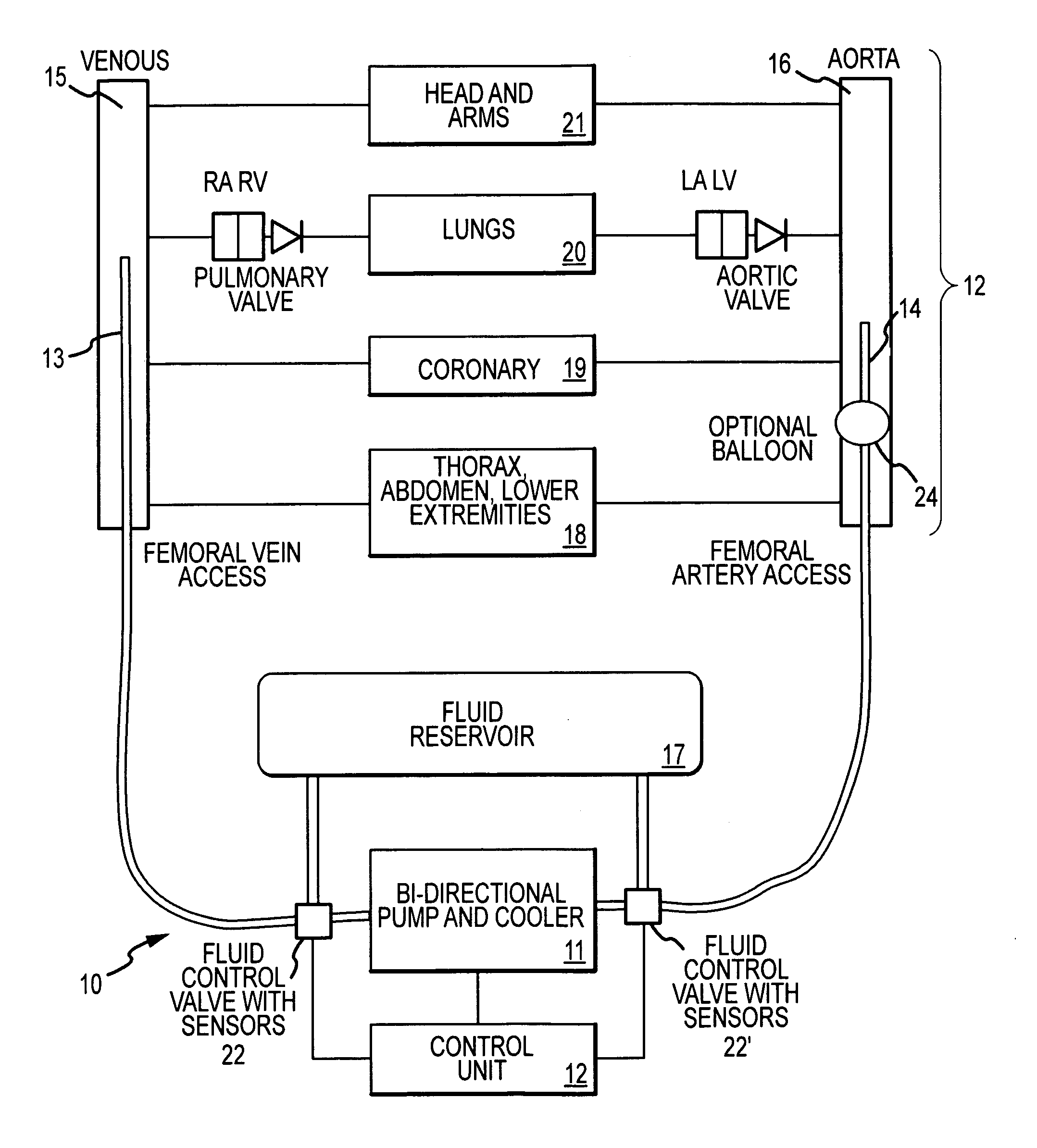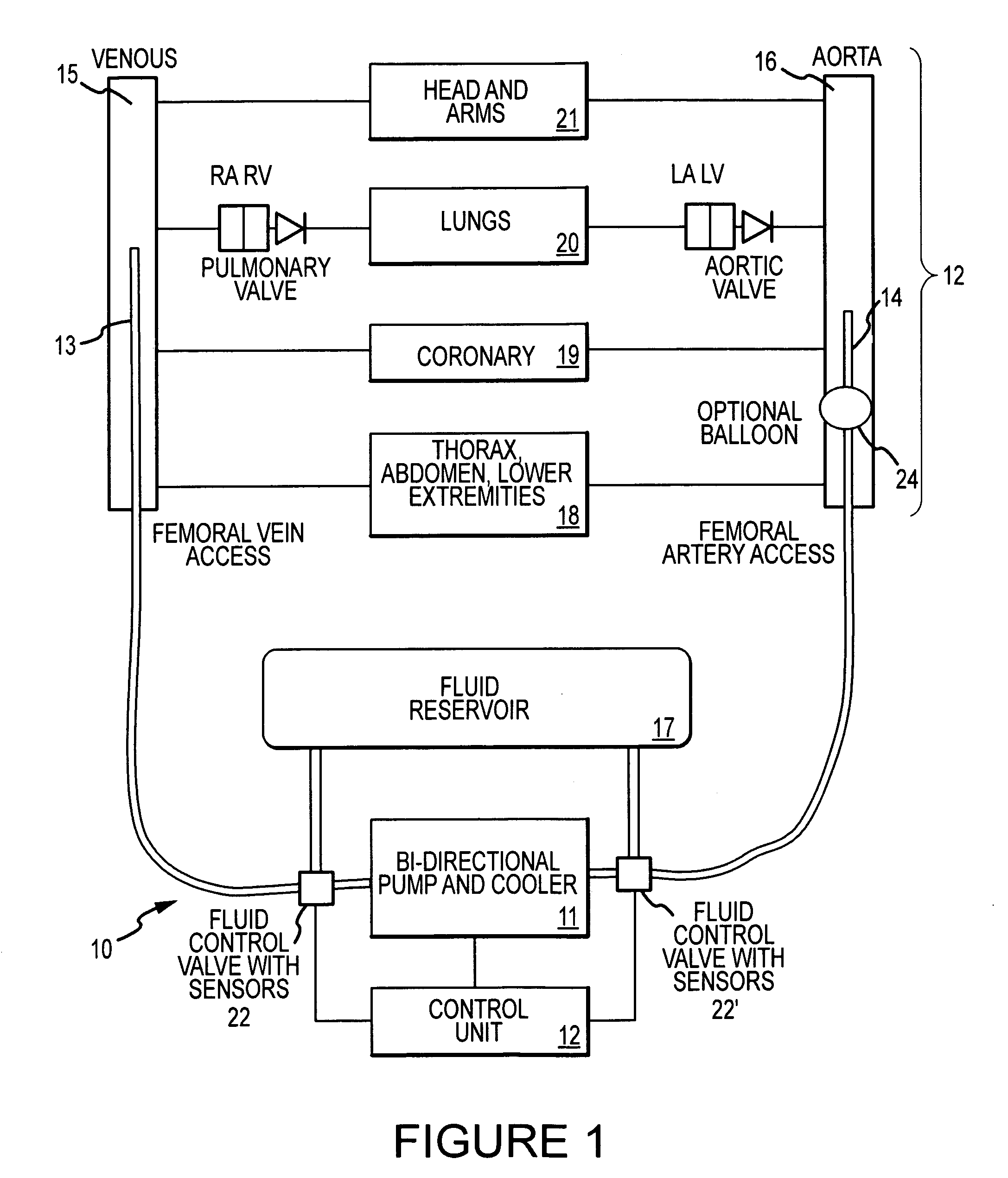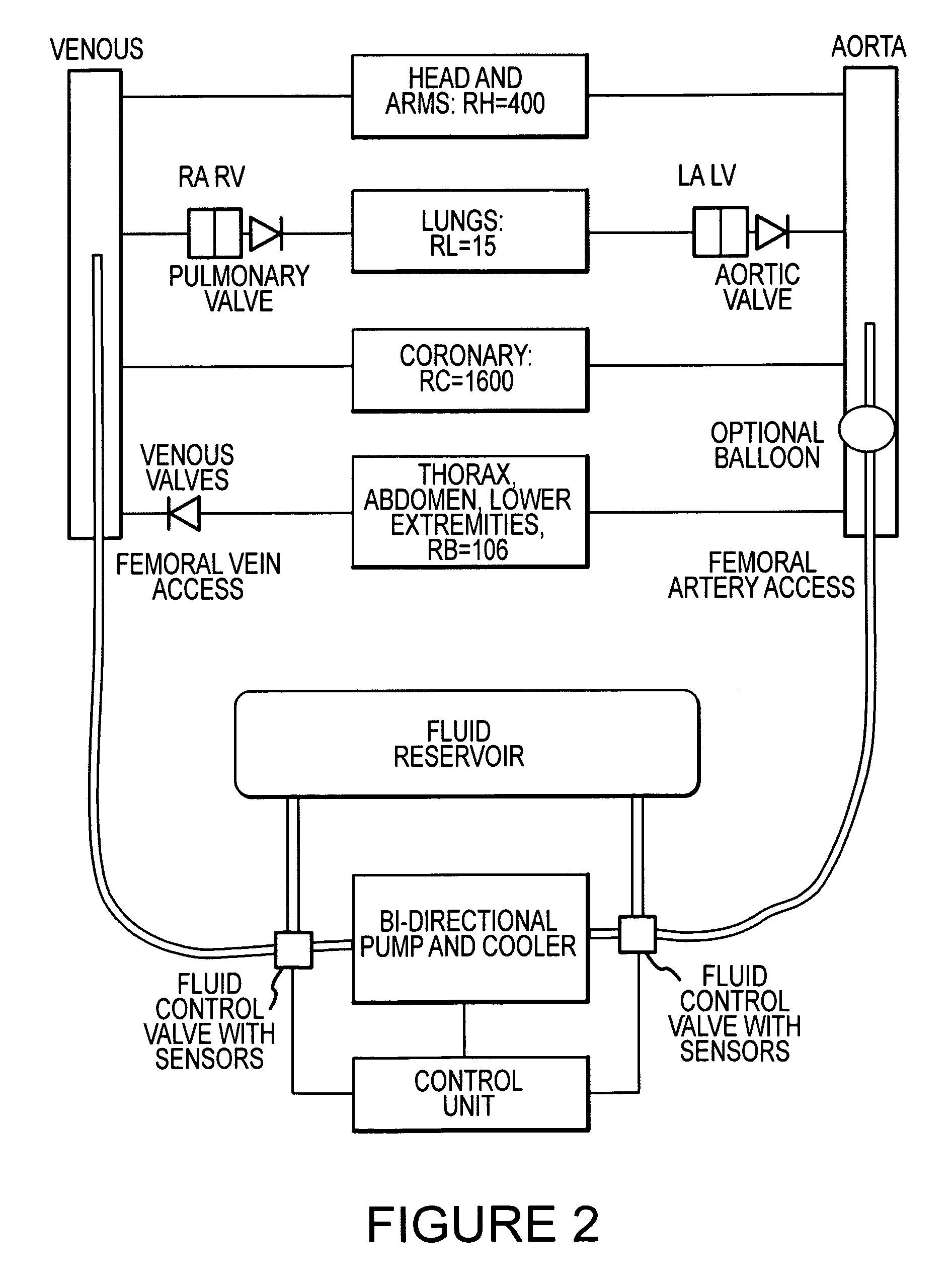Cardiopulmonary bypass devices and methods
a technology of pulmonary bypass and bypass device, which is applied in the direction of suction device, intravenous device, other medical devices, etc., can solve the problems of heart failure, heart failure, defibrillation and drugs that do not address the underlying cause, and the heart is simply too compromised to be restarted, etc., to achieve the effect of most cell death and subsequent irreversible organ damage, and the cell death of the cell
- Summary
- Abstract
- Description
- Claims
- Application Information
AI Technical Summary
Benefits of technology
Problems solved by technology
Method used
Image
Examples
Embodiment Construction
[0018]Certain details are set forth below to provide a sufficient understanding of embodiments of the invention. However, it will be clear to one skilled in the art that embodiments of the invention may be practiced without various of these particular details. In some instances, well-known circuits, control signals, timing protocols, and software operations have not been shown in detail in order to avoid unnecessarily obscuring the described embodiments of the invention. The invention is not limited to an emergency cardiopulmonary bypass apparatus, the apparatus according to the invention may also be used in hospitals for more traditional operations which require use of cardiopulmonary bypass.
[0019]FIG. 1 illustrates a block diagram of a cardiopulmonary bypass device 10 according to an embodiment of the present invention connected to a body. The device 10 includes first 13 and second 14 tubes for connection to veins 15 and arteries 16, respectively. Elements 15 and 16 may represent ...
PUM
 Login to View More
Login to View More Abstract
Description
Claims
Application Information
 Login to View More
Login to View More - R&D
- Intellectual Property
- Life Sciences
- Materials
- Tech Scout
- Unparalleled Data Quality
- Higher Quality Content
- 60% Fewer Hallucinations
Browse by: Latest US Patents, China's latest patents, Technical Efficacy Thesaurus, Application Domain, Technology Topic, Popular Technical Reports.
© 2025 PatSnap. All rights reserved.Legal|Privacy policy|Modern Slavery Act Transparency Statement|Sitemap|About US| Contact US: help@patsnap.com



